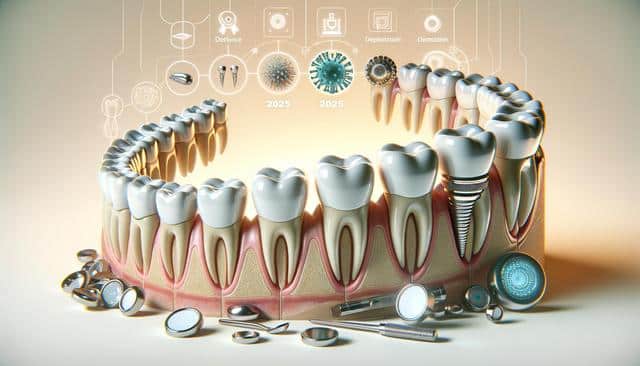Understanding Dental Bridges
Dental bridges are an innovative solution in restorative dentistry that have been gaining traction well into 2025. They serve as a bridge, quite literally, by filling the gap created by one or more missing teeth. The typical structure of a dental bridge includes two crowns on either side of the gap, known as abutment teeth, which anchor the artificial tooth or teeth in between. These artificial teeth are known as pontics and can be made from a variety of materials including porcelain, gold, alloys, or a combination. Dental bridges are especially suitable when there are healthy teeth on either side of the gap that can support the bridge, providing a stable foundation for the replacement teeth.
The Benefits of Dental Bridges
Opting for dental bridges offers numerous benefits that extend beyond merely restoring your smile. One of the primary advantages is the improvement in chewing and speaking. Missing teeth can make it difficult to articulate words properly, and chewing certain foods might become challenging or even painful. Dental bridges help restore these functions. Additionally, they maintain the shape of your face by preventing the natural shifting of remaining teeth, which often occurs when a gap is left unfilled. This aspect of dental bridges is crucial in preserving facial aesthetics and structural integrity.
Further benefits include:
- Even distribution of bite pressure across teeth
- Prevention of teeth movement into empty spaces
- Enhanced self-esteem and confidence with a natural-looking smile
With these advantages, it’s no wonder that dental bridges continue to be a popular choice for many individuals seeking restorative dental care.
Types of Dental Bridges
There are several types of dental bridges to cater to different dental needs and preferences. The most common type is the traditional dental bridge, which involves creating a crown for the tooth or implant on either side of the missing tooth, with a pontic in between. These are typically made of ceramic or porcelain fused to metal, providing durability and a natural appearance.
Other types include:
- Cantilever bridges: Used when there are adjacent teeth on only one side of the missing tooth or teeth.
- Maryland bonded bridges: Also known as a resin-bonded bridge, it employs a framework of metal or porcelain that is bonded onto the backs of the teeth adjacent to the gap.
- Implant-supported bridges: As the name suggests, these are supported by dental implants, providing a robust and stable solution.
Each type serves different situations based on the location and health of your surrounding teeth, emphasizing the importance of consulting with a dental professional to determine the best option for your needs.
The Process of Getting a Dental Bridge
The procedure for obtaining a dental bridge typically involves multiple visits to your dentist. The initial step involves preparing the abutment teeth by removing a portion of enamel to allow room for a crown to be placed over them. Impressions of your teeth are then made to create a model for the bridge, pontic, and crowns, ensuring a perfect fit. While the permanent bridge is being made, a temporary bridge is used to protect the exposed teeth and gums.
During the second visit, the temporary bridge is removed, and the new permanent bridge is fitted, adjusted, and cemented into place. At times, multiple fittings may be necessary to ensure the bridge fits perfectly and comfortably in the mouth. Regular follow-ups with your dentist ensure the longevity and effectiveness of the bridge.
Caring for Your Dental Bridge
Maintaining your dental bridge involves a commitment to good oral hygiene practices. Regular brushing and flossing are essential to prevent decay and gum disease that could compromise the bridge. Special care should be taken to clean under the pontic using a floss threader or an interdental brush. Regular dental check-ups and professional cleanings are equally important in maintaining both your bridge and overall oral health. A balanced diet that limits sugary foods and acidic drinks will also contribute to the longevity of the dental bridge.
With proper care, dental bridges can last anywhere from five to fifteen years, and sometimes even longer, making them a durable solution for missing teeth.
Conclusion: Embrace a Fuller Smile
In 2025, dental bridges remain among the preferred choices for those looking to restore functionality and aesthetics to their smile. With advancements in dental materials and techniques, they offer a reliable and effective solution to missing teeth. By understanding the various types and benefits of dental bridges, as well as committing to good oral hygiene, individuals can enjoy not only a restored smile but also enhanced confidence and quality of life. Consulting with a dental professional can help determine the best course of action tailored to your specific needs, ensuring you embrace a fuller, more confident smile.
